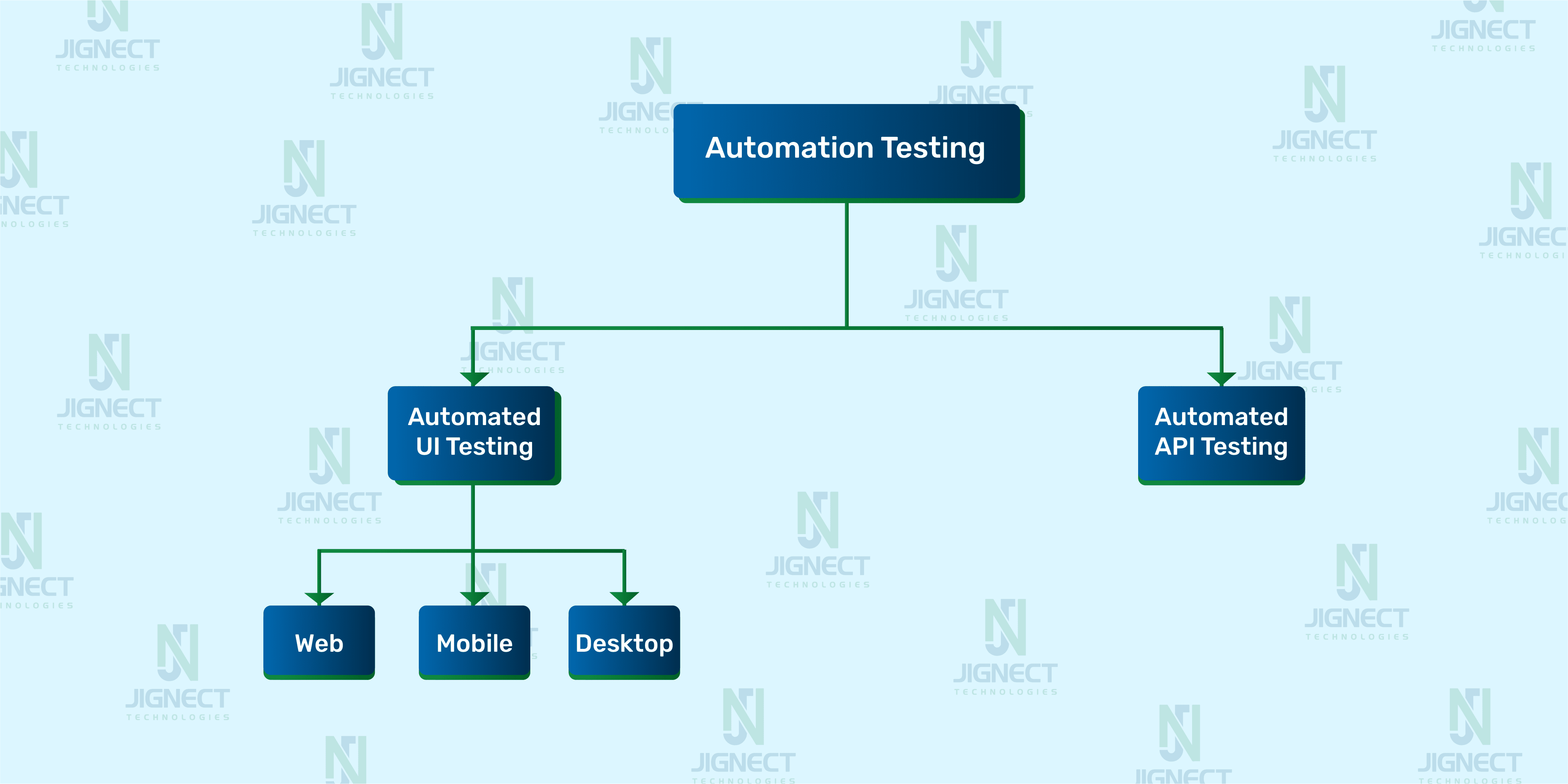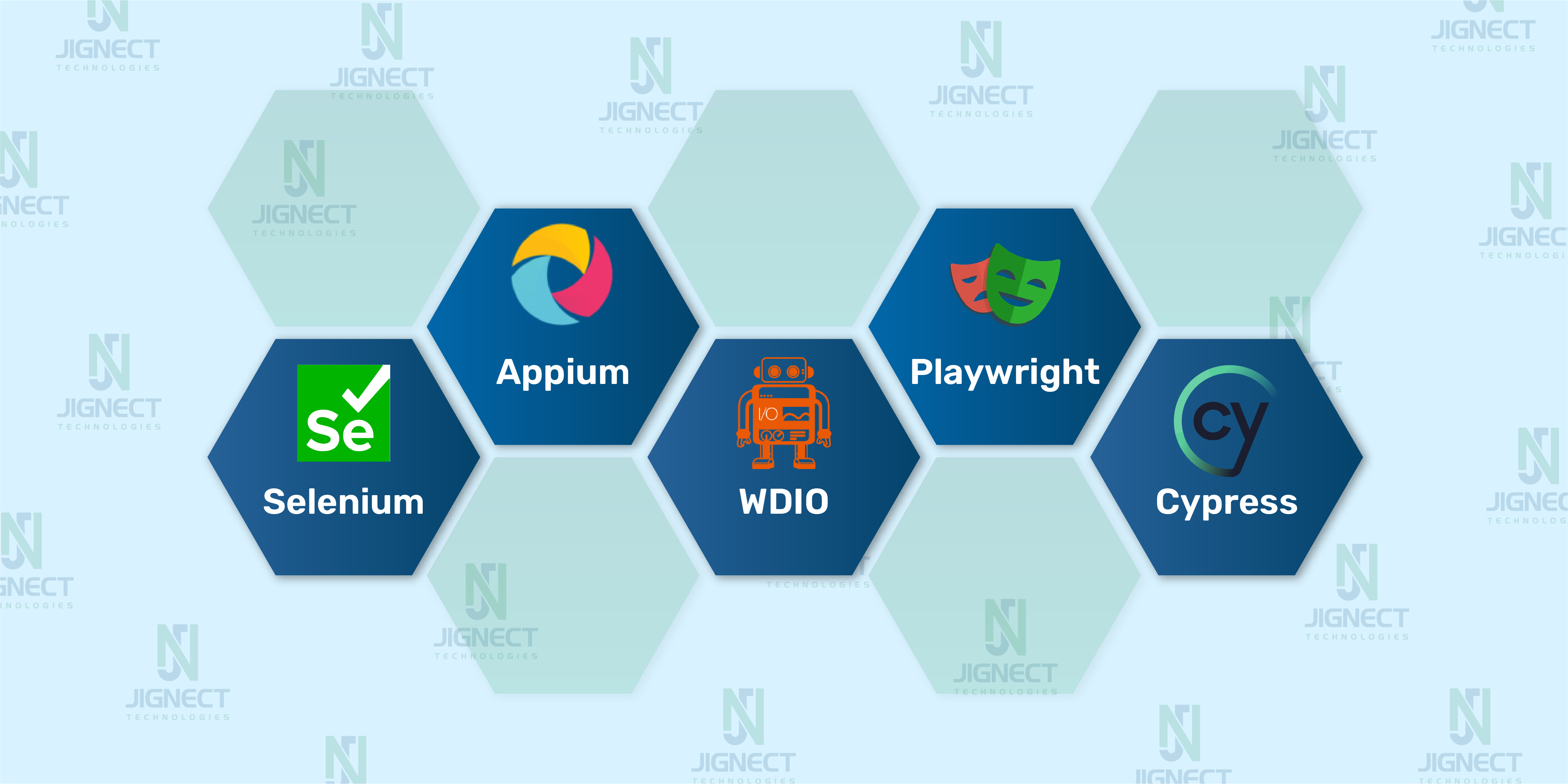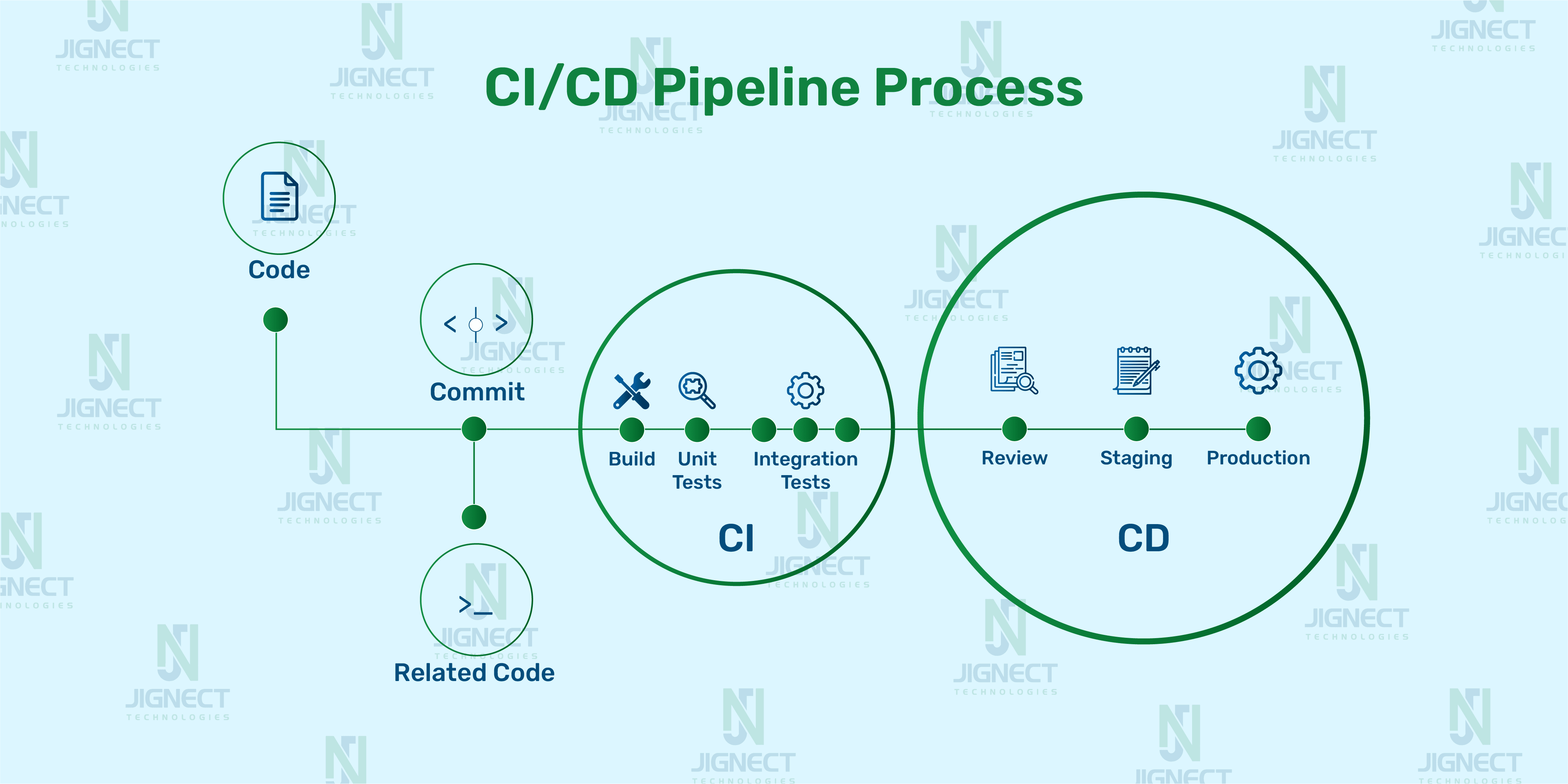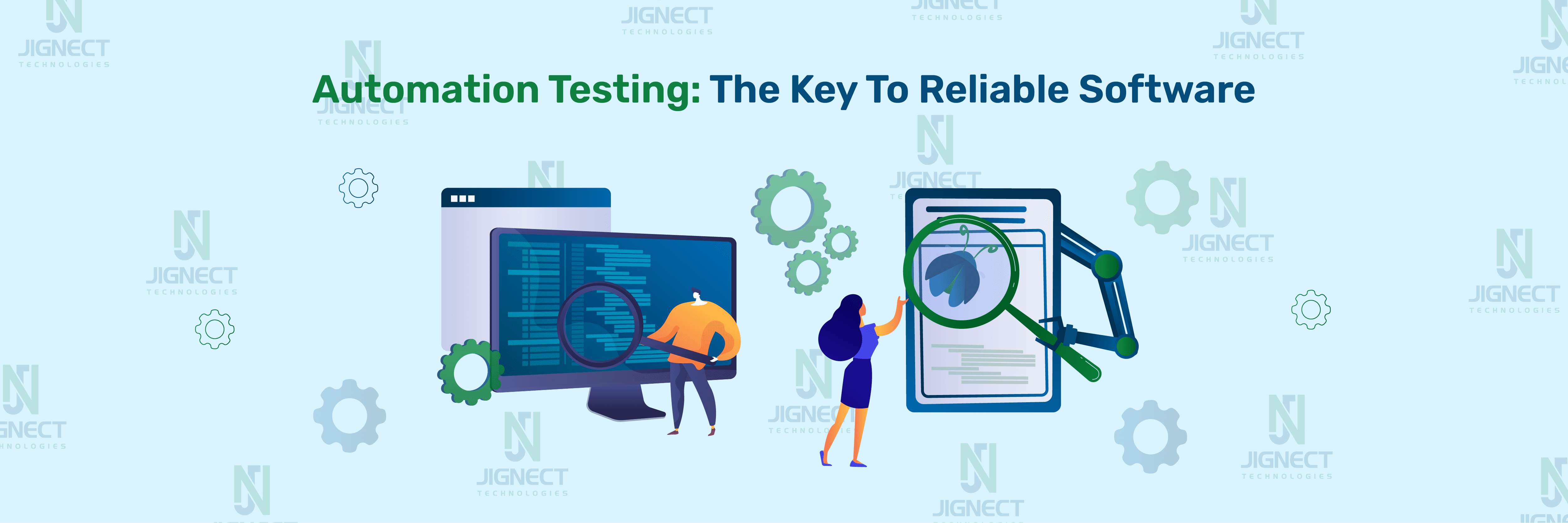A continuous testing cycle is necessary to provide high-quality software, regardless of whether you use a waterfall methodology, an Agile model, or another model. Automation works in partnership with manual testing to ensure that application testing is completed efficiently. Automation testing incorporates new techniques and technologies into the testing process, allowing for a speedier market release of high-quality products.
In this blog, we will gain knowledge about the importance of automation via learning what it is, why it’s needed, and the automation testing benefits. Moreover, we will look into different types of automation testing, how to choose the right tool and framework, what strategies and best practices should be used, agile integration, what will be the future trends, the role of CI/CD, how to measure ROI, How much project success in the market after using automation testing, why BDD framework. Whether you are fresher in your career or a seasoned software development engineer in test looking to keep up with the newest developments, this blog will help you comprehend the world of automation testing.
- What is Automation Testing?
- The importance of Automation Testing and the benefits it delivers
- Fiction about the Automation Testing
- Types of Automation Testing
- How to choose the best Automation tool for a project?
- Best practices that needs to be followed in Automation Testing
- What are the Automation Testing strategies?
- How to consolidate Automation Testing in agile methodology?
- Most popular Automation tools
- Common challenges: How to overcome it
- The role of CI/CD in the Automation Testing
- What can be the Next Gen trend in Automation Testing?
- Case Studies: Successful Automation Testing Implementation
- How to measure the Return on Investment of Automation Testing?
- Automation Testing using BDD
- Conclusion
What is Automation Testing?
Automation testing involves specialized software tools or scripts to check the quality of a product without the need for significant human intervention. This process eliminates the repetitive tasks previously carried out by humans and allows for the efficient management of tests, comparison of actual versus expected outcomes, and storing of findings reports.
The importance of Automation Testing and the benefits it delivers
Manual testing can be an obstruction in the development process as it becomes time-consuming and expensive to test applications, particularly the testing types like regression testing, performance testing, cross browser testing. As a result, product release might be delayed and costs increased. Here, automation testing offers a smooth testing process by automating repetitive tasks, unlocking a range of test automation advantages:
- Improve quality and scalability: Automation testing enables detailed testing for various scenarios such as regression testing, load testing, parallel testing in various browsers. Thus, the development process can handle the user demands without compromising the quality of the product.
- Early Bug Detection, Accuracy and Consistent Results: Automation testing runs faster than the manual testing which allows testers to log the bug earlier if present. The steady result of the repetitive scripts increase the accuracy of the product and share the manual testing burden to allow them to work on more complex scenarios.
- Increased Test Coverage: Automation testing covers a larger area of the testing scenarios compared to manual testing and adds enhancement to the accuracy of the product.
- Reusable: The written test scripts are reusable for testing when the development process has new changes, which will save time and effort from manual testing and the tester can focus on other tasks and scenarios.
- Parallel Testing: The simultaneous execution of automation scripts on numerous devices reduced the significant amount of time spent on the testing.
- Faster Releases, Reduced Costs and Resources: Automation performs a few tasks for the developer and tester, freeing them up to work on more important duties while saving money for additional resources and time for the present resource.
↪️To know more about advantages of automation testing, read our blog: Why Automation Testing is Essential: Key Benefits Explained.
Fiction about the Automation Testing
In the tech industry, there are several false beliefs and misunderstandings about automation testing. One of the most prevalent myths is that automation testing will completely replace the job of manual testers. However, in actuality, automation testing complements manual testing by enhancing product quality and expediting product releases. Another common belief is that automation testing is only for large-scale projects. In reality, small projects can also benefit from the automation scripts for the tasks that manual testers have to perform repeatedly. Automation testing does have some cons, but with proper planning and implementation, it can be overcome.
↪️For a deeper understanding of common myths and misconceptions about automation testing, and to uncover the real story behind these beliefs, check out this insightful Blog: Automation Testing Myths & Misconceptions vs. The Real Story.
Types of Automation Testing
Automation testing makes the testing process efficient by using various tools and techniques. Automation testing types are divided into two categories: Automated UI Testing and Automated API Testing.

Automated UI Testing
This testing involves the interaction of the software application’s UI elements, such as buttons, menus, dropdowns, checkboxes, and textboxes using automation tools. It verifies that the software application from the UI side works as expected from the business perspective. For instance, automating the login page of the application where username, password textboxes, and a login button are present with the ‘Login’ header, check that the user can login successfully while entering correct data and get user-friendly validation messages while entering incorrect data, along with comparing the design of the page with the expected UI.
Automated API Testing
This testing involves interaction with the application programming interface to verify functionality and its behavior. It focuses solely on the backend logic and data exchange without interacting with the user interface. By automating the API, testers can verify the data accuracy, consistency, performance, security, endpoint, and reliability of the application for every case within minutes. For illustration, automating the login API with all valid and invalid data inputs with assertion verifies the response format, response time, response data, and status code matched with the expected business requirements and frontend integration requirements.
Leveraging both types of automation testing in projects helps teams achieve rapid feedback, enhance product quality, and decrease the workload of the manual tester.
How to choose the best Automation tool for a project?
The selection of the correct automation tools depends on the project’s requirements. It is like finding the right diamond from the sea. There are some steps that you can follow to identify the best tool for your project.
- Understand the project: What is the domain of application? What kind of scenarios need to be automated? In which platform do automation scripts need to run?
- Team members: What skill set does the team have? What is your budget?
- Understand the tools: Is it easy to use? Does it offer the features that the project requires? Does it easily integrate with other tools that are required to use in a project?
- Long-term support: Does the tool have community support?
The project success ratio will be increased if you follow the mentioned steps by considering project requirements carefully.
Best practices that needs to be followed in Automation Testing
Repetitive testing, like checking the same features after every code change, is a drag for testers and error-prone too. Software automation testing is the superhero here! Automating these tests lets testers focus on bigger things while the machines handle the grind. This not only catches the bugs faster but also saves time and delivers the product faster into the world. To achieve these, some smart practices need to be followed in automation testing.
Let’s take a look into some of the best practices:
- Prioritizing test selection: In the testing scenarios, not every test needs to be automated, specifically those scenarios that need human judgment. Thus, the focus should be on the tests that bring the benefits when automated such as being required to run on multiple browsers, run after every build, and data-driven testing.
- Divide tasks based on skill: Each member of the team has a different skill set with different exposure. The tasks of the automation testing need to be divided into teams as per their strength and experience to optimize resource allocation and get the rapid expected result.
- Maintaining detailed records: Reports need to be kept for debugging the failed test scripts to get the actual reason for failing in less time. This helps differentiate between genuine bugs, flaky tests, and transient issues requiring no immediate fix so leaders can prioritize bugs accordingly.
Some other good practices are selecting the right framework for automation, doing the testing on real devices, generating metrics of result analysis, removing uncertainty, and many more.
What are the Automation Testing strategies?
An automation strategy is steps that you will follow to integrate automation practices into the process. In other words, it is a process of specifying the tasks and preparing the plan to achieve the specific goal through automation.
Here are the key components of a well-defined automation strategy:
- Define automation goals
- Hire a test automation expert or a team
- Choose the right technology
- Develop an implementation plan
- Setup the test automation environment
- Design and execute the test scripts
- Maintain the test suits
- Measure and monitor results
How to consolidate Automation Testing in agile methodology?
Agile methodology divides projects into short development cycles called sprints. Instead of focusing on the entire project, agile focuses on specific sprint tasks that allow teams to collaborate effectively and deliver valuable features rapidly. Continuous feedback from superiors or end-users enables agile teams to adapt quickly by adjusting priorities. Thus, efficient testing is required throughout the development process to ensure quality.
Automation testing aligns perfectly with this fast-paced environment. An agile team can achieve faster feedback, better test coverage, and higher-quality software by carefully selecting automation tests, locating a tool that meets project requirements, and integrating them with other tools/frameworks/libraries.
Most popular Automation tools
There are numerous automation tools present in the world of technology. For Automated QA, finding the perfect tool for the project as per their prerequisite is crucial. The topmost 5 contenders differences:

- Selenium: The worldly-wise, selenium offers cross-browser testing with multiple language support. It is perfect for complex testing scenarios in web applications.
- Appium: Appium is for mobile application automation. When your target is mobile automation either native or hybrid apps across Android and iOS, Appium is the perfect contender.
- WDIO: WebDriver IO is an open-source JavaScript-based framework that automates web and mobile applications. It offers modern API to interact with UI and strong community support makes it popular among developers and testers.
- Playwright: Playwright allows web, mobile web, mobile app, and even desktop application cross-browser testing. It’s a perfect fit for projects that require diverse testing.
- Cypress: Cypress provides a user-friendly approach that allows time-traveling debugging, automatic wait, and inbuilt browsers to get a smooth web app testing experience. If you are new to automation testing, starting with this framework is good.
While these are some of the most popular tools, there are other tool choices available such as Postman(API), TestCafe (Commercial), and JMeter(Performance). By understanding each tool’s strengths and ideal use cases, you can select the most suitable tool for your automation testing needs.
Common challenges: How to overcome it
Although automation testing has outstanding pros, it is not without obstacles. For organizations, implementing and managing automation frameworks is not easy. It comes with various challenges from technology, processes, team skills, and project requirements.
Let’s see a few common roadblocks:
| Challenge | Solution |
|---|---|
| Resistance to switching from manual to automation testing | Offer training sessions to equip team members with automation skills. Explain the benefits of automation testing, such as improved efficiency, faster feedback cycles, and reduced manual testing burden. |
| Maintaining test scripts after code changes | To document the reason for each step in the automation use comments with clear and conscious language. Implement a version control system to track changes made to test scripts and revert to previous versions if needed. |
| Ensuring adequate functional coverage in test scripts | Give the priority to the critical functionalities for automation where defects are likely. Exploratory testing techniques can help you find application edge cases or unexpected behaviour that automation may miss. Regularly review your test coverage and update automated tests to reflect changes in the application code. |
The role of CI/CD in the Automation Testing
CI/CD (Continuous Integration and Continuous Delivery) is a set of practices that help the software team deliver the project more effectively and frequently. In the software development lifecycle, CI/CD is an important approach to revert to the developer for feedback on the code changes quicker. This pipeline can also deploy code automatically or via trigger when all the test cases pass successfully and decrease the risk of deploying buggy software.

CI/CD Role in automation testing includes:
- Build Process: It builds the application automatically using the latest code of the repository.
- Execution Process: It runs all the test cases against the latest build of the application. It also allows you to run specific groups of tests while generating new builds.
- Automated Deployment: It deploys the code into the next environment automatically when all the test cases pass into execution progress.
In short, CI/CD acts like a conveyor belt to utilize automation testing in the development process. By automating regression and a smoke group of tasks with clear checkpoints, CI/CD verifies high-quality software is delivered faster and more reliably.
What can be the Next Gen trend in Automation Testing?
The future of automation testing is all about efficiency, intelligence, and seamless integration. Here’s a brief:
- From designing to maintenance, automation testing will be done using Hyper Automation which is a combination of AI and RPA.
- Artificial Intelligence and Machine Learning usage will be at their peak for their features like self-healing test scripts, generating test scripts, and predicting defects.
- To make sure that applications/websites are secure, user-friendly, and immediately responsive, non-functional testing automation’s importance will be increased.
- The automation testing tools that allow testing with less to no code will gain popularity among testers who have less coding experience.
- Software delivery with new features will be quick when CI/CD on demand is integrated into the development process.
- As microservices architectures become increasingly prevalent, specialized automation tools for API and service testing will be in high demand.
- Distributed Cloud Testing uses multiple geographic locations for faster, scalable, and globally optimized testing.
- To ensure a positive user experience, UX testing automation will become an important part of the testing.
The next trend guarantees a talented and productive strategy for automation testing, which facilitates the handover of applications with outstanding quality and fulfills user desires appropriately.
Case Studies: Successful Automation Testing Implementation
As an automated software testing company, we have worked on many projects using automation and satisfied clients by delivering high-quality products within a given timeline. We accomplished this by carefully identifying the tools and technologies required for the project and implementing them according to the priorities agreed with the team. Clients can save money, time, and embarrassment in front of people. Clients are capable enough to serve this world by using untouched ideas to perform their tasks more effectively. Continuous feedback, revisions, and new ideas are inevitable in every web or mobile application, and the development/testing team must work on them at all times. Even after deployment, testing does not stop. The automated test scripts ensure that the application’s performance remains steady despite customer up/down traffic, that security remains stable, and that attackers can not breach the data.
Explore more successful case studies using automation into projects by our published case-studies.
How to measure the Return on Investment of Automation Testing?
Many people hold the opinion that automation testing is expensive and not good to adapt when you have a limited budget or want to save money for something that significant. The return on investment (ROI) assists you in understanding the long-term benefits of automation testing. Positive ROI calculation shows that you saved money from automation testing by:
- Reducing manual testing costs by saving time and resources for repetitive tasks
- Improving software quality by catching bugs earlier
- Delivering software faster by integrating CI/CD in the process
Formula of ROI:
ROI = (Benefits – Costs) / Costs * 100
Here,
- Benefits show the positive outcome of automation testing which is measured by saved cost and efficiency of product.
- Costs show the investment made in automation testing
The ROI value of automation testing you can understand the benefits of automation testing for the cost aspect and secure your project with automation implementation.
Automation Testing using BDD
BDD stands for Behavior Driven Development, a team-based technique that delivers automation scripts from the user’s perspective. It bridges the communication gap between business stakeholders, developers and testers to understand the features and the workflow as it’s using human-readable language which is known as Gherkin.

Advantages of BDD in automation testing:
- Shared understanding
- Live documentation
- Effective test coverage
- Early bug detection
- Improve communication
- Faster Delivery
Cucumber and SpecFlow are popular BDD frameworks nowadays. Project team members can achieve a better testing process by integrating automation testing with the BDD framework.
Conclusion
You are at the conclusion, which means you’ve taken the first step toward understanding why automation testing is gaining prominence and why it’s essential to integrate it into the SDLC. As we know, continuous testing and faster delivery are trending now, and to meet these demands while maintaining low costs and high software quality, automation testing has become indispensable in the development and testing phases.
Remember, automation testing is not a one-size-fits-all solution. Before starting with automation, check the project requirements with different methodologies, tools, and strategies and then plan carefully which fits right to your project to make automation testing a powerful asset of the software development toolkit.
Witness how our meticulous approach and cutting-edge solutions elevated quality and performance to new heights. Begin your journey into the world of software testing excellence. To know more refer to Tools & Technologies & QA Services.
If you would like to learn more about the awesome services we provide, be sure to reach out.
Happy Testing 🙂




